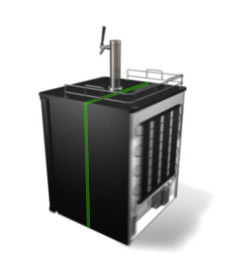uptheirons
Well-Known Member
I have a Magic Chef refrigerator (Model HMDR1000BE) that I am converting into a kegerator. I read in a couple of threads here that I have to drill the hole in the hump at the bottom for the CO2 line. The user manual says to leave 5” on the back and sides which means I cannot drill a hole in the sides. Does anyone have pictures to share? There is a metal plate on the back bottom so if I drill through the hump, I will probably hit the metal plate.
Thanks
Thanks





















![Craft A Brew - Safale S-04 Dry Yeast - Fermentis - English Ale Dry Yeast - For English and American Ales and Hard Apple Ciders - Ingredients for Home Brewing - Beer Making Supplies - [1 Pack]](https://m.media-amazon.com/images/I/41fVGNh6JfL._SL500_.jpg)












































